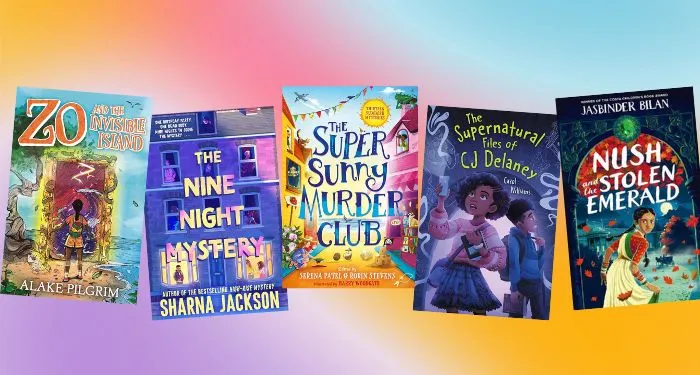For Authors
Character redemption arcs hold a unique power in storytelling, transforming flawed or even villainous characters into figures of empathy and inspiration. But why do these arcs resonate so deeply with readers, and how can you, as an author, craft a redemption journey that leaves a lasting impact? In today’s blog, Ginger explores the significance of character redemption arcs and offers a range of techniques to help you weave them into your own work.
Drawing from examples in popular fiction, Ginger illustrates what makes redemption arcs both believable and satisfying, making the process of applying them to your stories clearer and more accessible. Whether you’re looking to add emotional depth to your characters or simply create unforgettable narrative twists, understanding the “why” and mastering the “how” of character redemption arcs can transform your writing.
Like millions of Americans, I’ve been glued to the hit Amazon Prime TV show The Boys. It’s one of the few live-action adaptations that totally outshines the comic book original – giving us richer and more nuanced characters that the audience can’t help but become invested in.
The show is famous for being gory and outrageous, but for me the series is more shocking for the emotions it forces you to deal with. When I started watching The Boys, I couldn’t last more than 15 minutes without needing to take a break. Every scene seemed to involve the characters having to make truly excruciating decisions which really messed with the audience’s understanding of who was “good” or “bad.”
And there’s no character that question is more relevant to than A-Train, the resident super-speedster of the famous “Seven.” Able to run faster than the speed of sound, A-Train is introduced to viewers in the first moments of the first episode – when he literally liquifies the girlfriend of lead character Hughie by running straight through her. Later, we seem him laughing and joking about it with his superhero pals – instantly cementing the sadistic speedster as one of the most irredeemable characters in the show.
Except, showrunner Eric Kripke utterly subverted our expectations over the course of the next three seasons and gave us exactly that – redemption. As Homelander’s insanity intensifies and the fate of America seems to hang in the balance, it’s A-Train who risks everything to help provide intelligence to the boys – and in doing so, even earns a forgiving handshake from Hughie.
It’s brilliant writing and really elevates the narrative of The Boys – making it some of the most compelling character-driven fiction since Breaking Bad. I was so inspired that I wanted to write a blog post about how satisfying a well-written character redemption arc is – and offer some guidance on how you can write a redemptive arc in your own stories.
The Allure of a Good Character Redemption Arc
The Boys may be nailing character redemption on television right now, but in literature there are also thousands more examples to draw from – because, after all, few elements captivate us readers quite like a well-executed character redemption arc!
When flawed or villainous characters embark on a journey of self-discovery and transformation, it resonates really deeply with us – not just because all good stories are journeys, but also because these arcs allow us to sit comfortably with our own mistakes and flaws.
That’s why, for self-published authors, crafting a satisfying redemption arc and weaving it into your narrative can elevate your story to new heights – potentially making it unforgettable!
At its core, a character redemption arc is a narrative of hope, forgiveness, and the possibility of change. It speaks to the human condition, reminding us that no one is beyond redemption and that everyone has the potential to become better. It even mirrors similar themes in religious texts. This universal theme of transformation always strikes a chord with readers, and here are some reasons why:
- Relatability: As readers, we often decant ourselves into the characters we read about – and it’s comforting when we see parts of ourselves in flawed characters. Witnessing these characters overcome the shortcomings that we’re guilty of can be a powerful and inspiring experience.
- Emotional Depth: Redemption arcs are emotionally rich. They take readers on a roller-coaster journey of guilt, regret, struggle, and ultimately, redemption. Given that storytelling at its core is about moving a reader from one emotion to another, redemptive arcs can be incredibly powerful.
- Moral Complexity: Redemption arcs add layers of moral complexity to the narrative. They challenge readers to reconsider their perceptions of right and wrong, good and evil. In a world in which it’s not always easy to see who the good guys are, it’s nice to be able to explore such nuance in the safety of a fictional setting.
- Satisfying Resolutions: There is a profound satisfaction in seeing a characters come full circle, from darkness to light, from antagonist to hero. It provides a sense of closure and fulfillment that purely heroic narratives sometimes lack. All good stories are circular (that’s why I talk about Dan Harmon’s story circle so much) and that’s never more accurate than in a redemption arc.
Examples of Memorable Character Redemption Arcs
Several beloved characters from popular fiction illustrate how powerful and moving a well-crafted redemption arc can be:
- Severus Snape (Harry Potter series by J.K. Rowling): Severus Snape reminds all of us of those sadistic teachers we hated at school. But while he was initially portrayed as a vindictive and unpleasant character, Snape’s true motivations and sacrifices are revealed progressively throughout the book series. His deep, unrequited love for Lily Potter and his ultimate loyalty to protect her son, Harry, despite personal risk, eventually reframes his character from villain to tragic hero. So much so that Harry even names his child after Snape.
- Ebenezer Scrooge (A Christmas Carol by Charles Dickens): Scrooge’s transformation from a miserly, selfish man to a generous, warm-hearted benefactor is one of the most iconic redemption arcs. His journey, prompted by supernatural visitations, underscores the potential for change in even the most hardened hearts. The countless adaptations of A Chrismas Carol – perhaps the most-adapted work of fiction in history – demonstrate the timelessness of Scrooge’s story.
- Jamie Lannister (A Song of Ice and Fire series by George R.R. Martin): Just like A-Train from The Boys, most people know of Jaime Lannister from the hit HBO adaptation of Martin’s original books – and his character arc is one of the things people love the most about him. Known initially as the despised “Kingslayer,” Jamie’s character undergoes significant development. Through various trials and revelations – including losing his right hand – Jaime evolves into a more honorable and empathetic individual, challenging readers’ initial perceptions.
Tips for Writing Satisfying Character Redemption Arcs
You probably didn’t need me to convince you about how powerful a character redemption arc is, but now that we’re definitely on the same page about it, let’s talk about how to do it. Creating a compelling redemption arc requires careful planning and a deep understanding of your character. Here are some tips based on the examples I’ve just given you.
- Establish a Strong Backstory:
- Your character’s past should provide insight into their flaws and motivations. Understanding why they became the way they are is crucial for readers to empathize with them. Consider their upbringing, key events that shaped their personality, and any traumas or influences that led them astray. That’s why it’s so powerful to see Scrooge’s “Ghost of Christmas Past”, for example – demonstrating that he used to be a kindly individual, before betrayal hardened his heart.
- Show Gradual Change:
- Redemption should be a journey, not an instant transformation. Gradual change is more believable and impactful. Show your character struggling with their flaws, making mistakes, and slowly learning from them. Each small step towards redemption should feel earned – and sometimes the price is significant. Jaime Lannister was known as the greatest swordsman in Westeros before he lost his hand, and he’s truly humbled and forced to rediscover his identity before he can embark on his journey of redemption.
- Include Moments of Doubt:
- A realistic redemption arc includes setbacks and moments of doubt. Your character might relapse into old habits or question their worthiness of redemption. These moments add depth and make the eventual redemption more satisfying. Severus Snape is a great example of this – with every protective gesture he makes toward Harry followed by an example of spitefulness and cruelty.
- Highlight Key Turning Points:
- Identify pivotal moments in your story that significantly impact your character’s path to redemption. These could be encounters with other characters, significant events, or internal realizations. Use these turning points to advance their transformation meaningfully. Think of Scrooge seeing Tiny Tim’s empty chair at the dinner table, Jaime staring at the stump of his sword-hand, or Snape seeing the dead body of the woman he loved. These were the moments that made their story seem real.
- Develop Relationships:
- Relationships often play a crucial role in redemption arcs. Characters who inspire, challenge, or support your protagonist can be instrumental in their journey. These relationships can provide motivation, offer new perspectives, and reinforce the theme of change. Jaime’s relationship with Brienne, Scrooge’s fondness for Tiny Tim, and Snape’s reluctant protectiveness of Harry all demonstrate how the right people can guide us into making the right decisions in life.
- Emphasize Internal Conflict:
- A character’s internal struggle is central to a redemption arc. Showing their inner turmoil, guilt, and desire for change makes their journey more relatable and engaging for readers. Redemption arcs are difficult, and it’s powerful to show these characters struggle with the temptation to take the easy route and avoid the pain and sacrifice that awaits them. As Dumbledore explains to Harry: “Now we must choose between what is right and what is easy.”
- Provide Clear Motivations:
- Ensure your character’s motivations for seeking redemption are clear and compelling. Whether it’s seeking forgiveness, proving themselves, or protecting loved ones, strong motivations make their journey more authentic and relatable. It’s easier to understand why a character does something if you know why they’re doing it.
- Deliver a Satisfying Conclusion:
- The resolution of your redemption arc should be satisfying and meaningful. It doesn’t necessarily mean a happy ending, but the character should achieve some level of growth and redemption. Avoid abrupt or overly convenient resolutions; the ending should feel earned through the character’s efforts and experiences – and, in the case of Snape and Jaime, perhaps even paid for with their lives.
The End of the Arc
When fiction is adapted for television, it often exposes a whole new audience to familiar characters and their story arcs – and the characters the audience embrace the most are those with good character redemption arcs. That’s why A-Train and Jaime Lannister are some of the favorite characters from The Boys and Game of Thrones series.
And on the page, character redemption arcs hold a special place in the hearts of readers and writers alike. They embody the timeless themes of hope, change, and the enduring human spirit. For self-published authors trying to grow their audience, mastering the art of the redemption arc can add emotional depth and complexity to your stories, making them resonate more deeply.
By drawing inspiration from memorable examples in popular fiction and following key principles of storytelling, you can craft redemption arcs that are not only satisfying but also unforgettable. Embrace the challenge, delve into the complexities of your characters, and let their journeys inspire and captivate your readers. In the end, a well-executed redemption arc is a testament to the power of storytelling and the enduring belief in the potential within us all for change.
Now, before I go – what are some of your favorite character redemption arcs from fiction? I’d love to hear about them in the comment section below.
Share this blog
About the Author

Ginger is also known as Roland Hulme - a digital Don Draper with a Hemingway complex. Under a penname, he's sold 65,000+ copies of his romance novels, and reached more than 320,000 readers through Kindle Unlimited - using his background in marketing, advertising, and social media to reach an ever-expanding audience.



















 English (US) ·
English (US) ·